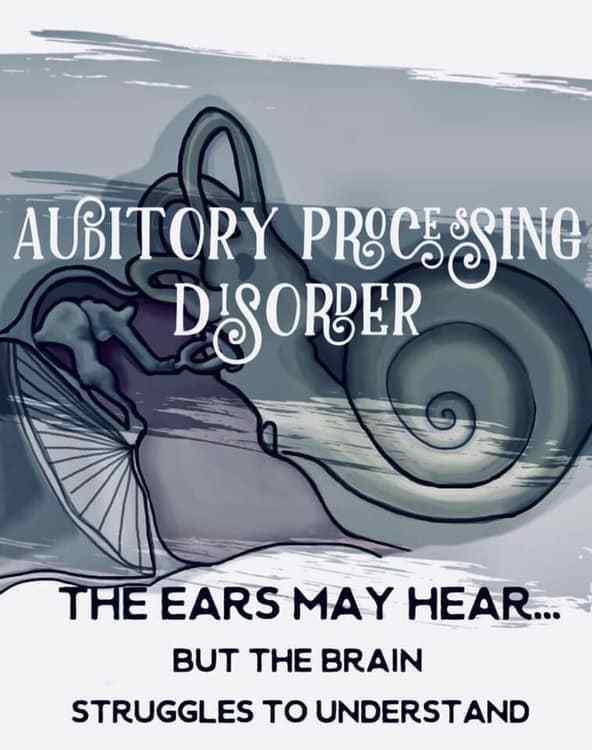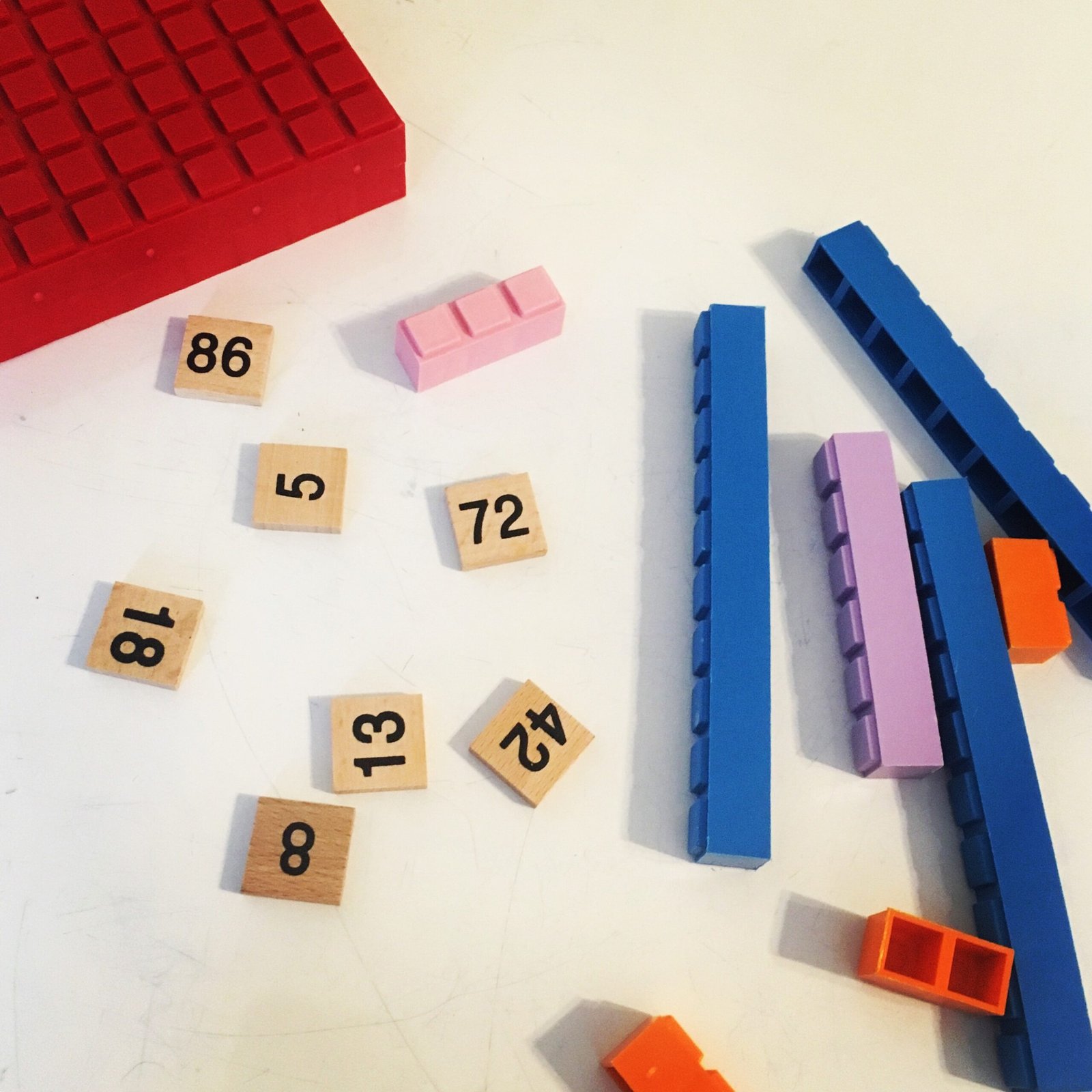Auditory Processing Disorder is when a person’s brain has trouble making sense of words and sounds. This doesn’t mean the person is deaf or has trouble hearing. It means though, that when you speak to them, their brain may not catch every word. Imagine dealing with the whole world through a phone with bad cell reception. Sometimes you understand what they are saying, and sometimes you can fake it because you’ve heard this story before. Or you know your mom always asks how you are doing. So you answer that even if you aren’t sure that was actually what she just asked. When she gets mad that wasn’t what she wanted to know, you don’t really understand, because you really didn’t catch the question she said.

Art credit to Dr. Rachel Walters Stout of Sound-Sense.net.
This is why auditory processing disorder can be so frustrating for both parents and children. When you are homeschooling, it can be even worse. As a parent, you may wonder if your child is lazy, not paying attention, or just doesn’t care. It can be even worse when a younger sibling follows directions or can listen to a story better than an older one. Getting a diagnosis from a psychologist or other qualified provider is only the first step, though, in dealing with auditory processing disorder.
Here are my tips for how to adapt your homeschooling to help a child with auditory processing disorder.
Let go of audiobooks and reading aloud long chapter books as a primary learning tool.
Picture books are a wonderful substitute for younger students. There are some truly wonderful picture books out there to teach almost any topic. And once you start looking at them, you will find there are many with very mature information and stories. Older students can also read for themselves, to increase their understanding, or read along while you read aloud. Often the problem with audiobooks is that the student with auditory processing disorder will happily listen to the story but miss out on small details or key facts. The elements they don’t catch and process can mean that they later don’t actually understand what is happening or why characters are behaving as they are.
If you must do things that are auditory, consider helping your child by pausing and repeating key facts, making a list, or drawing pictures to help them catch details. I have done this for my kids while playing D&D recently. I draw stick figures to show how many bandits we have to battle and cross them off as they die. Or I doodle other elements from the story or make a list of facts that we are supposed to remember and hang it up. My character is a wizard with a magical whiteboard. It makes gameplay better for all of the kids because the child with auditory processing issues is no longer confused or behaving erratically.
Use math manipulatives.

Not every manipulative will resound with every child. You may need to back up and figure out how to use those manipulatives best to support where your student is. If you aren’t sure, you can use YouTube to hunt for teaching ideas. I like blocks, like Unifix cubes, for learning to add, subtract, multiply, and divide. But I also have other math blocks in our home. I like the abacus too, but explaining how to use it can take time.
If your child is struggling with math, consider that they may have not understood an explanation somewhere along the way and missed out on a simple key idea. Back up and use games and manipulatives to play with math ideas starting with counting them out and working your way up. Remember that your child may have trouble processing your words, so use as few as possible. Instead, write down the number or math problem, and demonstrate with the blocks or manipulatives while your child watches. Then have your child try the activity while you sit quality. Answer questions, but instead of verbal instruction, do your best to just help them move the manipulatives if they want help.
Give your child visual cues.
Demonstrate or point out things, instead of verbal instructions. Recently, my child got a runny nose while we were out. Instead of saying “Get a tissue,” I waited until the child looked at me. Then I pointed at the child and pointed at the tissue box in a meaningful way. My child immediately got up and got a tissue and it was much less stressful than me yelling, again. Use gestures to communicate simple ideas. You can also post signs, lists, and schedules in your home. These help your child to see and read for themselves about what they should be doing or what is going on.
More Hands-On Activities.
 As you select a curriculum for this child, keep in mind that a curriculum with hands-on projects and videos that are highly visual will work better than something that is based on listening to lectures or audiobooks. If your curriculum requires your student to discuss ideas, use a whiteboard to write down key points that you and she make while talking. Give your child extra time, and realize you may need to repeat information or instructions several times for your child’s brain to catch everything you are saying. Sometimes, just doing an example problem or writing an example paragraph for your child to see, can help them better understand what to do.
As you select a curriculum for this child, keep in mind that a curriculum with hands-on projects and videos that are highly visual will work better than something that is based on listening to lectures or audiobooks. If your curriculum requires your student to discuss ideas, use a whiteboard to write down key points that you and she make while talking. Give your child extra time, and realize you may need to repeat information or instructions several times for your child’s brain to catch everything you are saying. Sometimes, just doing an example problem or writing an example paragraph for your child to see, can help them better understand what to do.
Follow Their Cues.
Remember, if your child acts like they didn’t hear you, they probably didn’t even if they were looking right at you. So slow down. Say fewer words, so they don’t get lost in the extra ones. And try to remember that your child isn’t ignoring you. Their brain just isn’t catching everything. Once you find ways to teach that work with your child’s strengths, homeschooling will get easier.
Hang in there, Mama!
If you would like more information and support, visit the website Sound Sense, which has great ideas for tools, devices, and consulting for people of all ages with hearing loss, auditory processing disorder, and other auditory dysfunctions.





As an audiologist working with APD , I disagree that these kids should not use audiobooks- while you can reinforce details they may have missed , I feel it’s important to exercise listening skills by using them. Even kids with APD , ironically , may be auditory learners. Going mainly visual improves retention of details but does not address the problems.
That is a great point , that some kids still do well with audiobooks and get a lot of benefit from working with that media , even if they do have auditory processing issues. But for some kids- a video with the visual component added in , helps them get more out of the learning experience. It is important that each parent work with their own child to figure out what works best for them.
Thank you so much for talking about this much needed and often missed tropic when it comes to learning with auditory processing disorder. Combining apd and adhd make things even more challenging. As you said , hands on activities are so helpful! It’s like the glue between focus , listening and also building communication and relational skills.
I am so glad you found my thoughts helpful! Having multiple learning challenges is hard- on both the child and us parents.